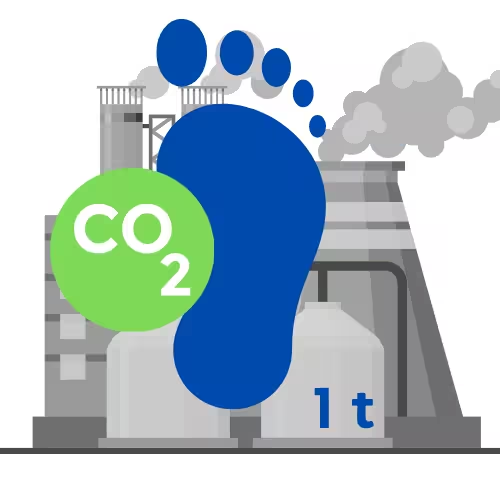Journey to Carbon Reduction: How One Business Transformed Their Emissions Management by Managing Energy Consumption
With the drive toward carbon neutrality, one business set out to reduce its emissions and improve energy efficiency. Here’s how an Energy Management System (EMS) helped them understand, optimise, and ultimately cut their carbon footprint through four strategic steps.
Step 1: Selecting Carbon-Neutral Suppliers to Reduce Supply Chain Emissions
Challenge: The business aimed to reduce emissions, but supply chain energy use made up a significant portion of its carbon footprint. Partnering with suppliers who were already certified carbon-neutral was a key consideration.
Solution: By choosing certified carbon-neutral energy providers, the business reduced its indirect emissions. Researching suppliers’ environmental certifications, such as Science-Based Targets or Climate Active credentials, helped align their supply chain with sustainability goals.
Outcome: This approach minimised emissions and set a strong foundation for more managing energy consumption.
Step 2: Assessing and Optimising Energy Consumption
Challenge: Energy costs were high, and the business needed to identify where consumption could be reduced.
Solution: Using an EMS, the business tracked energy usage in real time. The EMS data highlighted specific energy-saving opportunities, enabling them to optimise high-consumption areas like lighting, heating, and equipment use.
Key Actions Included:
- Comparing energy supplier rates to ensure cost-efficiency.
- Installing energy-efficient equipment.
- Focusing on high-consumption processes, such as HVAC and machinery, and making upgrades where needed.
Outcome: Lowered energy costs and reduced the expense of carbon offsets, creating a direct economic and environmental benefit.
Step 3: Transitioning to Renewable Energy Sources
Challenge: After analysing their energy use, the company wanted to further reduce emissions by shifting to renewable sources.
Solution: The EMS data provided insights into their peak usage times and patterns, guiding the shift to renewable sources. For smaller-scale energy needs, they used programs like GreenPower, while larger investments were offset through available government grants.
Outcome: A notable reduction in their operational emissions and a more sustainable energy portfolio that supports the business’s long-term carbon goals.
Step 4: Engaging Key Decision-Makers for Long-Term Success
Challenge: Gaining support for sustainability initiatives required a compelling case demonstrating both cost and carbon savings.
Solution: By presenting measurable data from the EMS, the business showed potential savings from investments like energy-efficient equipment and solar panels, underscoring the financial and reputational benefits of these changes.
Outcome: Buy-in from decision-makers allowed the business to commit to its long-term carbon reduction strategy, benefiting both the environment and the company’s bottom line.
Starting Your Own Energy Management Journey
An EMS can provide any business with the data needed to understand energy usage, identify emission reduction opportunities, and make informed, sustainable decisions. Are you ready to make a difference? Contact our team today to begin your energy management journey and move towards a sustainable, profitable future.
